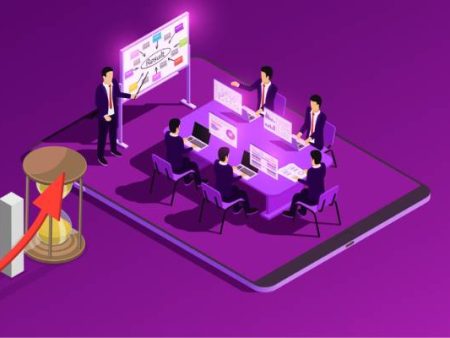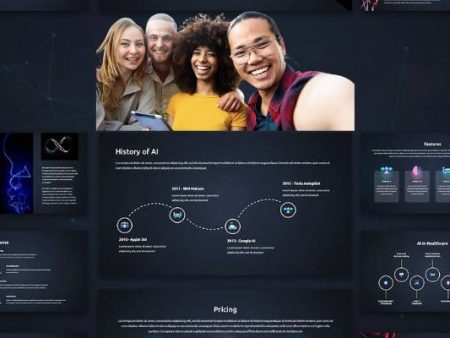There’s a certain quiet dread that creeps in when you’re staring at a blank presentation slide. The title box blinks like it’s mocking you. You know what you want to say, but the thought of arranging it into coherent visuals, tidy bullet points, and polished design? That’s another story.
I’ve been there, more times than I care to admit. Maybe you’ve been there too—whether it was a pitch deck, a client update, or a lecture you wanted to impress students with.
PowerPoint, Keynote, Google Slides—they’ve all been staples, but let’s be honest, they often leave us with decks that are more meh than memorable.
But here’s where things get interesting. In recent years, something’s been happening that feels less like an upgrade and more like a full-on revolution. Thanks to the rise of AI, presentation design is no longer confined to templates, stock clip art, and your questionable font choices at 2 a.m.
We’re entering an age where AI not only suggests layouts but writes the content, chooses the visuals, and adapts the tone. It’s changing how ideas are shared—and who gets to share them.
The Rise of AI in Presentation Design
For decades, PowerPoint reigned supreme, and while it democratized communication, it also standardized it—too much. Decks started to blur together. Remember the infamous “death by PowerPoint”? A term coined because of overly long, monotonous, and poorly designed presentations that bored audiences into submission.
AI is challenging that narrative. Tools like Beautiful.ai, Tome, Gamma, and even Microsoft’s Copilot for Office are reshaping the design landscape. Instead of asking you to manually wrestle with font sizes and bullet hierarchies, these systems can generate whole slide decks from a single text prompt.
A recent report by MarketsandMarkets estimates that the global AI design tools market (including presentation software) will grow from $1.5 billion in 2023 to $8.4 billion by 2030 . That’s not hype—that’s momentum.
Why? Because AI doesn’t just save time. It reframes the creative process. You can go from boring to brilliant in a fraction of the effort it used to take.
Why Traditional Slides Don’t Cut It Anymore
Let’s face it: audiences are more distracted than ever. A Prezi survey found that 70% of professionals admit to multitasking during presentations (source). If people are checking their phones halfway through your deck, the problem isn’t just attention spans—it’s presentation fatigue.
Here’s the rub: traditional tools haven’t kept pace with expectations. People now crave visually striking, story-driven, interactive experiences. Slides overloaded with bullet points? They sink. AI-generated visuals and narratives? They float.
We’re living in a TikTok and YouTube Shorts era. The audience is trained to expect clarity and engagement fast. AI presentations lean into that, offering design and storytelling that grab attention, rather than dilute it.
10 Ways AI Saves Presenters Time (and Stress)
Now, let’s talk specifics. Here are 10 ways AI saves you from the drudgery of slide creation:
- Instant outlines: Type in “Marketing strategy for 2025” and AI builds your deck’s skeleton.
- Drafted content: Slide text is automatically generated, tailored for your tone.
- Smart design layouts: AI knows design principles—contrast, hierarchy, alignment.
- Auto-branding: Upload a logo, and every slide sticks to your color palette.
- Chart generation: Upload data, and AI creates polished graphs instantly.
- Image sourcing: Tools pull or even generate custom visuals that match your narrative.
- Narrative suggestions: AI can propose metaphors, analogies, and story arcs.
- Real-time editing: Need another slide? Just type, “Add competitor analysis.”
- Collaboration features: AI integrates with teams for faster feedback loops.
- Accessibility options: Alt-text and readability scores built right in.
That’s hours saved—sometimes days. And it’s not just about speed; it’s about allowing you to focus on what actually matters: telling your story.
Are AI-Generated Presentations Killing Creativity?
This is where debates heat up. Skeptics ask: are ai-generated presentations killing originality?
On one hand, I get the concern. If everyone uses AI to generate decks, will we all end up with cookie-cutter slides that look and sound the same? Will human creativity get sidelined by algorithmic efficiency?
But here’s my take: AI doesn’t kill creativity—it eliminates the boring bits. Think about it. Instead of spending three hours nudging boxes into alignment, you can spend that time crafting a compelling narrative.
Instead of agonizing over which stock photo looks “professional but not too staged,” AI can propose 10 options, leaving you to choose the best fit.
It’s not replacement. It’s augmentation. AI handles the grunt work, and humans infuse the heart.
And if you’re really worried about sameness, remember this: creativity has always thrived within constraints. Even if two people start with the same AI deck, their voices, their stories, their humor—those can’t be replicated.
A Step-by-Step Guide to Building an AI-Powered Deck
For anyone itching to try it, here’s a step-by-step guide to building a presentation with AI:
- Define your goal: Are you persuading, informing, teaching, or inspiring?
- Pick your tool: Gamma for interactivity, Tome for storytelling, Copilot if you’re in Microsoft’s ecosystem.
- Write your prompt: Be specific. Instead of “marketing plan,” say, “A 12-slide investor pitch deck for a fintech app targeting millennials.”
- Generate the draft: Let the AI create the initial deck.
- Refine the content: Edit the text to match your voice and audience.
- Tweak the visuals: Swap images, adjust colors, add charts.
- Add your personal touch: Anecdotes, humor, local references.
- Rehearse with the deck: Make sure flow matches your delivery style.
- Test on colleagues: Get feedback—AI can’t yet replace fresh human eyes.
- Finalize and export: Share in PowerPoint, PDF, or web link.
Following this workflow, you’ll likely save 50–70% of the time you’d normally spend.
Where AI Excels and Where It Still Falls Short
It’s easy to get swept up in the hype, so let’s be clear-eyed.
Strengths of AI presentation design:
- Speed and efficiency.
- Solid baseline designs even non-designers can use.
- Consistency with branding.
Weaknesses:
- Generic phrasing that sometimes lacks depth.
- Context blind spots (nuance is hard).
- Limited cultural sensitivity (especially with images).
That’s why human oversight is still non-negotiable. The best decks emerge when AI and humans work hand-in-hand.
Real-World Impact: Who’s Using AI Presentations?
AI-generated decks aren’t confined to tech nerds. They’re spreading everywhere:
- Startups: Founders who need pitch decks fast.
- Teachers: Turning lesson notes into engaging slides.
- Marketers: Creating campaign decks on short timelines.
- Nonprofits: Building polished donor presentations without design budgets.
Even Fortune 500 companies are experimenting. Microsoft has integrated Copilot into PowerPoint, and Adobe’s Firefly AI is creeping into design workflows. These aren’t side projects anymore—they’re core strategies.
What the Numbers Say
Let’s ground this in data:
- Forrester Research predicts that by 2030, automation will cut 29% of hours spent on communication prep, including presentations (source).
- Gartner estimates that by 2026, 90% of corporate decks will include AI-generated elements (source).
- SlideShare traffic—once the king of shared presentations—has dropped steadily as newer formats emerge, suggesting the ecosystem is ripe for disruption.
Looking Ahead: The Future of Presentations
The next frontier isn’t just static slides—it’s adaptive, interactive, immersive decks. Imagine AI that adjusts your visuals in real time, based on audience engagement. Or voice-activated presentations that generate supporting data on the fly.
Some prototypes already exist. AI-driven platforms like Tome allow for dynamic storytelling, where slides expand or shrink depending on how much time you have. Others experiment with VR/AR, blending immersive visuals with live talks.
The bottom line? Presentations are becoming less like documents and more like living experiences.
My Final Take
If you ask me, AI isn’t ruining presentations. It’s rescuing them. It’s lifting us out of the rut of sameness and giving us tools that make communication sharper, faster, and dare I say—more human.
Sure, there’s risk in over-reliance, and yes, guardrails are needed. But overall, this feels like a chance to rethink how we tell stories visually.
Because presentations were never meant to be about slides. They were meant to be about ideas. And if AI helps us deliver those ideas with more clarity, empathy, and creativity—then that’s a future I’ll gladly embrace.
Closing Thought
PowerPoint had its time. It was groundbreaking in its era, but also guilty of creating monotony. Now, thanks to AI, presentations can finally evolve. From boring to brilliant—that’s not just a catchy phrase. It’s a shift happening right in front of us.


